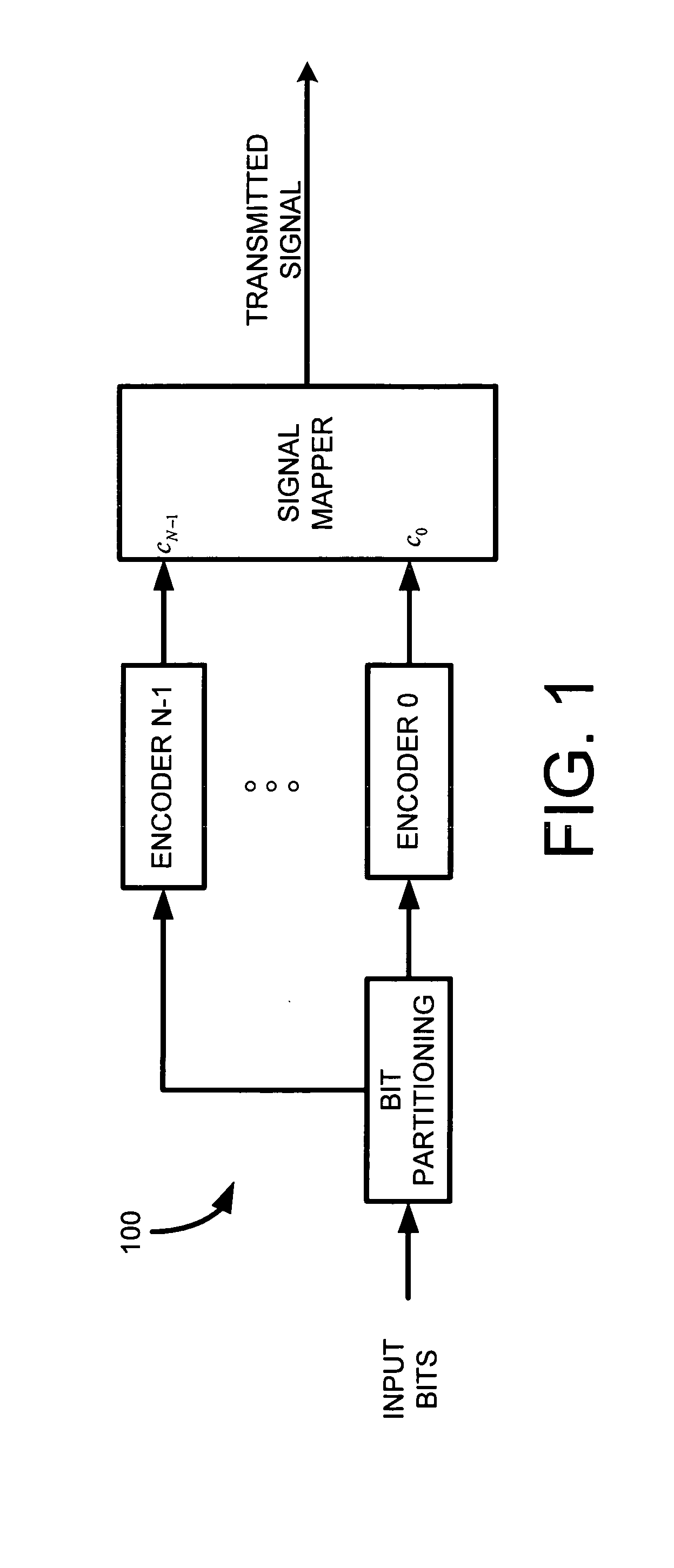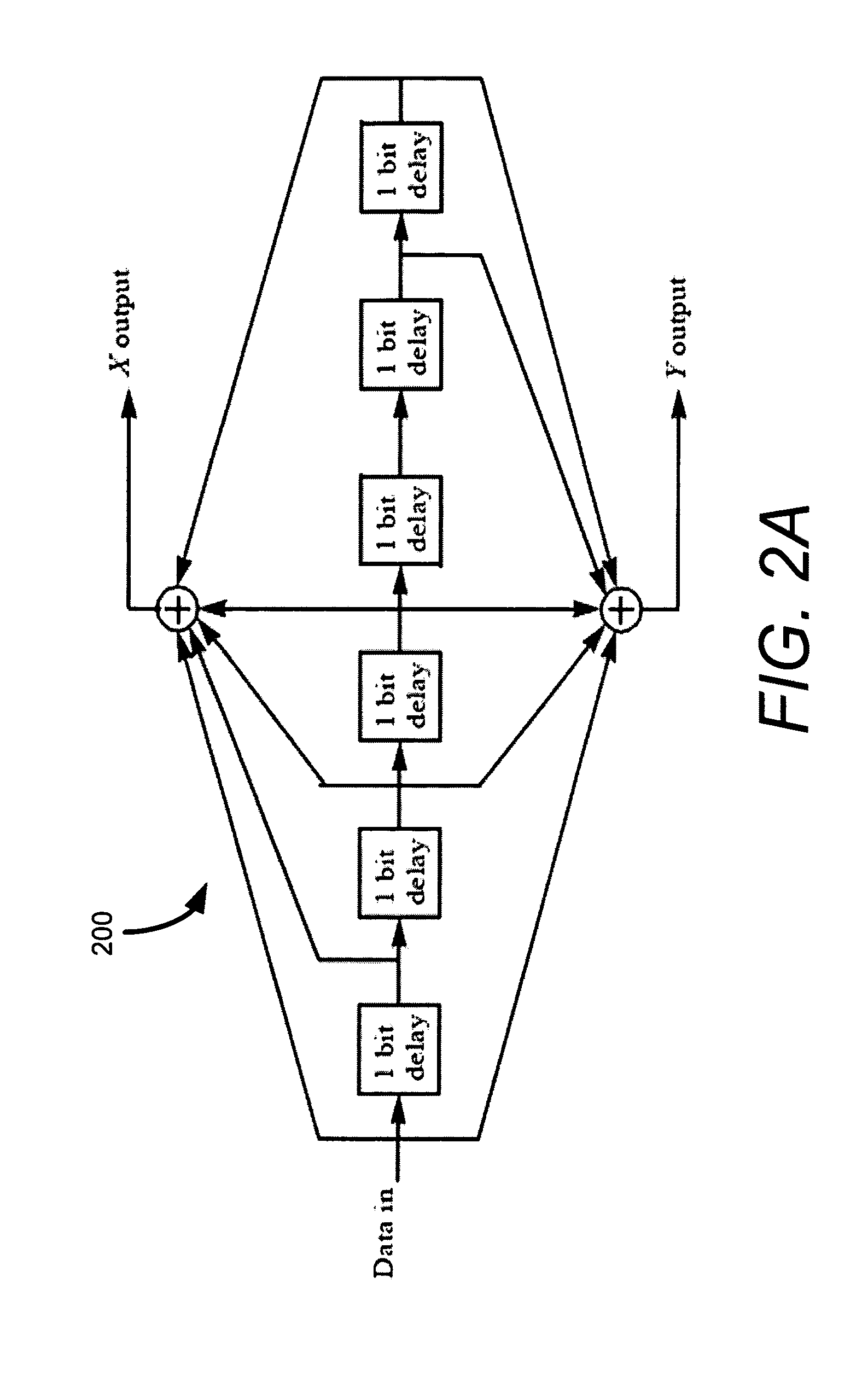List-viterbi hard iterative decoder for multilevel codes
a multi-level code and code decoding technology, applied in the field of coded modulation techniques, can solve the problems of inability to achieve the optimal error coding exponent of mlc schemes designed according to capacity rules, inability to operate on hybrid trellis, and inability to achieve the optimum error coding exponent of mlc schemes for shorter block lengths
- Summary
- Abstract
- Description
- Claims
- Application Information
AI Technical Summary
Benefits of technology
Problems solved by technology
Method used
Image
Examples
Embodiment Construction
[0037]The description of the preferred embodiments is presented as a sequence of sections as indicated below.
I. Exemplary MLC Scheme and Building-Block Labeling Approach
[0038]The trellis coded scheme shown in FIG. 2 has been adopted for use in the IEEE 802.16a (WiMAX) Standard [FIG. 161, FIG. 163]. As shown in FIG. 2A, this scheme uses a rate ½ convolutional code with memory υ=6 and a free Hamming distance of dfree=10. In the IEEE 802.16a standard, the two coded bits, x, y, are mapped respectively to the LSBs of the in-phase (I) and quadrature-phase (Q) channels. One uncoded MSB is added to each of the x and y bits, so that a total of two coded bits and two uncoded bits are used to select a 16-QAM constellation point as shown in FIG. 2B. Using a constellation similar to that shown in FIG. 4A, constellation points are separated by a minimum distance of D2=4a2. Therefore, the shortest merging event has a raw minimum squared Euclidean distance (MSED) of (dfree)(D2)=10D2=40a2. However, ...
PUM
 Login to View More
Login to View More Abstract
Description
Claims
Application Information
 Login to View More
Login to View More - R&D
- Intellectual Property
- Life Sciences
- Materials
- Tech Scout
- Unparalleled Data Quality
- Higher Quality Content
- 60% Fewer Hallucinations
Browse by: Latest US Patents, China's latest patents, Technical Efficacy Thesaurus, Application Domain, Technology Topic, Popular Technical Reports.
© 2025 PatSnap. All rights reserved.Legal|Privacy policy|Modern Slavery Act Transparency Statement|Sitemap|About US| Contact US: help@patsnap.com



